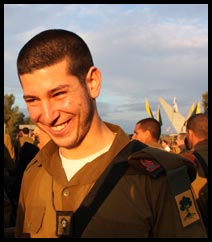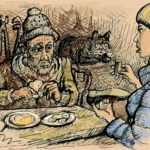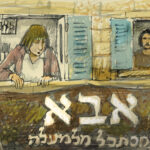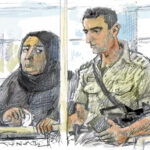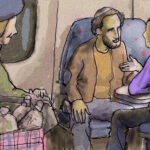This is a guest post for Rosh Hashana, which came to me as an email from a good friend. Reprinted with his permission, and with several references to his wife Ruthie. And, oh yes, with his explanation of the headline on the post: “So what did you expect from a disciple of the Kotzker Rebbe, warmth and sunlight and hugs?”
Bob Carroll
As some of you know, I spent a decent amount of time this summer driving around the Southwestern US, taking pictures for what will hopefully become a photo book of ghost towns. It all started as an excuse to drive around the desert and get mighty lost, which in some ways is the point of this message, but we’ll get to that in a moment. So one day, having come from about ten days in Death Valley, I was looking for a certain ghost town about 2 hours away. To find this particular place, you have to drive to a town near a dry lake called Lake Owen and from there one finds a road going up to a mountain top, I think it’s about 11,000 feet high, and that’s where the ghost town is. Only I couldn’t find the $#@!! road for the life of me. So I spent about an hour in the town by the dry lake (Keeler) which is itself almost completely deserted and a very charming place to photograph. Didn’t see a soul. After a while I spotted a very elderly woman and figured what the heck, I have nothing to lose. So I rolled down my window and asked if she knew how to get to the ghost town. “Oh no”, she replies, “You can’t go up there yourself. Mike owns the land now and he really doesn’t like people mucking about up there. Let me call him and he’ll have to interview you.” After 20 minutes, a white guy arrives in an old jacked-up pickup truck, wearing spurs and a cowboy hat. Maybe in his late 50’s. Asks me what I want up there, so I told him I am just a guy who likes taking pictures of old ghost towns, and heard his was a good one. He looks me over and decides I am OK, so tells me that he is going up there to work on one of the buildings and I can follow him up.
40 minutes and one awesome narrow jeep trail later, we get to the town. Except it’s 11,000 feet up, so it’s cold, and I just came from Death Valley, where it was 122 degrees. Before I continue, a quick note: I do not advertise who I am on these trips. One never knows who you will run into, and some of them are not paragons of tolerance. So I was wearing a bandana on my head and when he asked where I am from I just told the guy that I am from New Jersey. Anyway, without thinking about it, I reached into my jeep and grabbed the only jacket I had brought, which happened to be my green fleece Border Guard jacket. It has one very small Hebrew logo on it, that’s all. Very inconspicuous.
Read more
